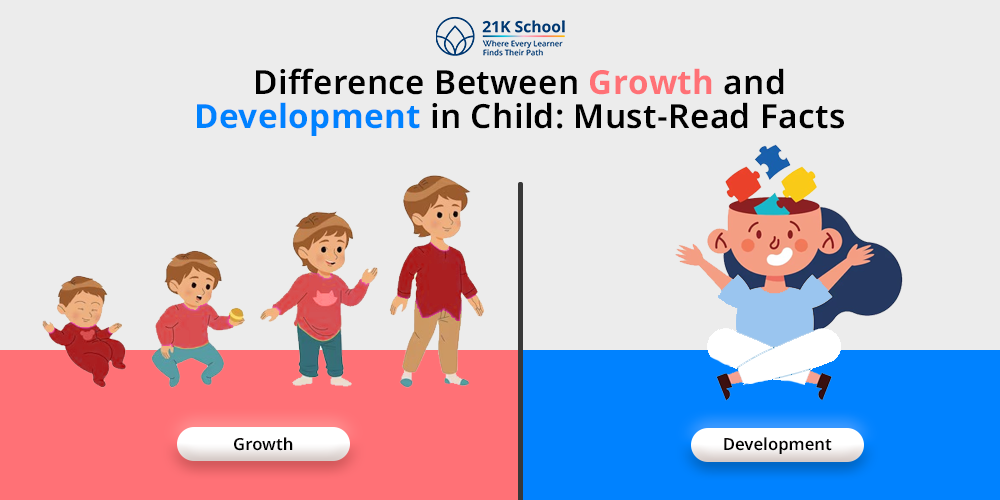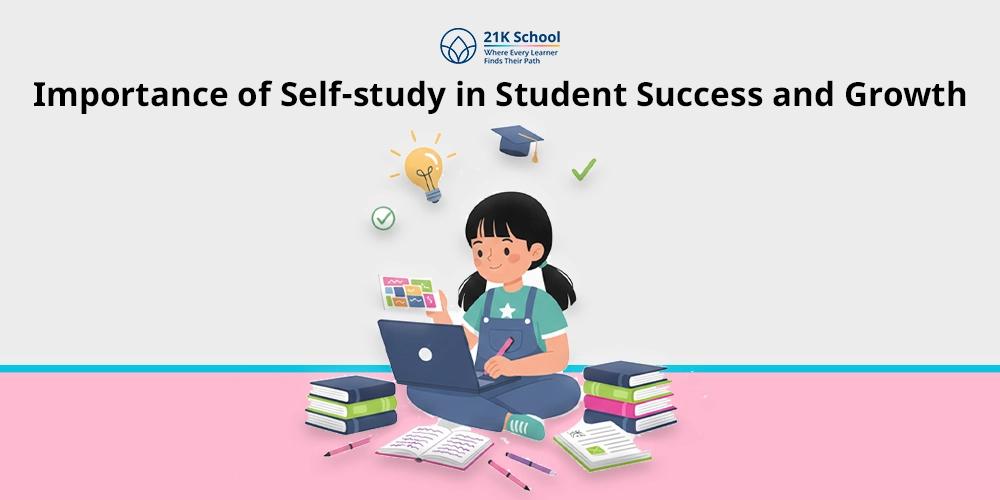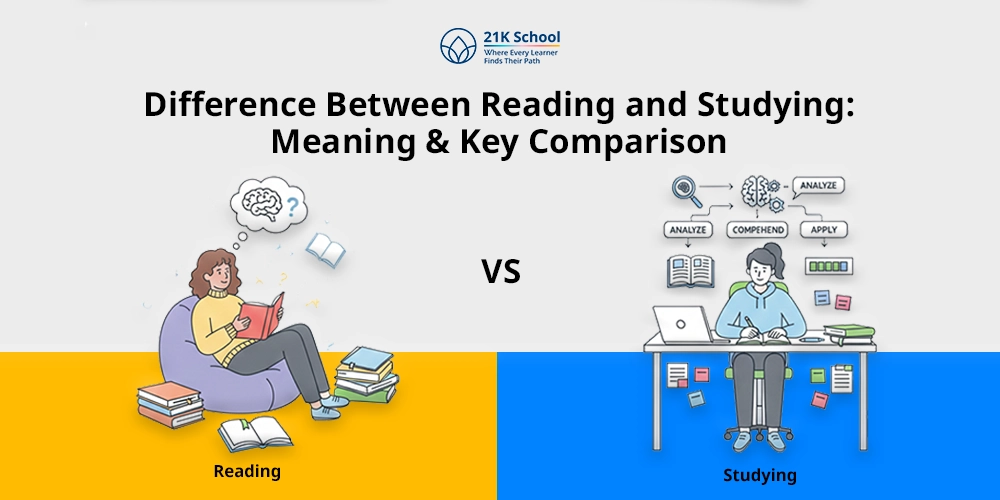
You might have seen people using the words growth and development similarly. But are both these words the same?
A child grows and develops differently. Parents and teachers need to stay in attention to get the difference between both and to help their children become an adult slowly.
Mostly, the growth seems visible but development seems a bit under of view. This is because the former one is physically seen but development sometimes isn’t.
This article here will help you to understand the difference between the growth and development, without creating any further confusion. Let’s dive in.
Contents
Difference Between Growth and Development in Child
Parents look very concerned about their childrens development in present times and the difference between growth and development lets them develop an idea of their kid’s needs and preferences.
| Feature | Growth | Development |
| Meaning | Increase in physical size and structure | Progressive improvement in skills, behavior, and function |
| Type | Quantitative – measurable | Qualitative, means based on abilities and behavior |
| Focus Area | Height, weight, size of organs | Cognitive, emotional, social, and motor skills |
| Measurement Tools | Growth charts, scales, BMI | Milestone checklists, screenings, observations |
| Timeline | Fastest in early years and puberty | Continuous, but rapid in early childhood |
| Can be Seen/Measured? | Yes and through numbers | Not directly. Observed through actions |
| Influencing Factors | Genetics, nutrition, health, environment | Genetics, parenting, social exposure, culture |
| Examples | Gaining 2 inches in a year | Learning to talk, walk, share, or solve problems |
1. Definition
- Growth: The physical increment in size and shape of a child in his growing ages is called growth.
- Development: Development shows the gradual increase in acquired skills as a child becomes a grown adult.
2. Nature
- Growth: Growth has a quantitative nature that can be seen and measured in physical terms.
- Development: Development is quite vague as qualitative, and tougher to measure but possible through certain instruments.
3. Focus
- Growth: The primary focus of growth is to see if the child is getting optimal changes in the body as per their physically.
- Development: Development aims at skills evaluation and measuring cognitive development of children .
4. Rate
- Growth: Rate of growth is faster in the primal ages of growth and also at puberty age of children.
- Development: Seen as continuously attaining through experience and exposure, but fastest in primary or early ages of child.
5. Measurement
- Growth: In physical terms, growth is measured by BMI, measurement tapes, weighing machines, etc.
- Development: Development can be seen through their accomplishments, participation and cocurricular and extracurricular activities .
6. Influences
- Growth: The most primary factor influencing growth is genetic factors and nutrition given to children.
- Development: The exposure a child receives, his environment, society, experiences, all shape how to develop and prepare children for the future .
7. Progress
- Growth: Progress in growth of a child is predictable as any other child does. It is biological.
- Development: How development gradually appears in a child’s life is through parental support, exposure, and guidance.
8. Examples
- Growth: A child’s legs and hands increase in length once they start reaching puberty.
- Development: Calmness and maturity while resolving conflicts in a child among their friends can be said to be an instance of development.
What is Growth?
Growth shows the physical changes in a child’s body across increasing age of child. As a parent, growth suffices for a quantity based aspect of seeing if your child has grown or not, and to what extent.
Growth is basically a naturally occurring process that shows increase in size in physical features of the body or internal organs. Either it is you or me or any living being of this planet, everything can be seen to grow and that is to a certain extent and to a certain age or time period.
Growth can be measured with multiple equipment likely as BMI, scales, measuring tapes, and weighing machines. Growth also is easily reversible when not taken care of properly, like a person losing weight due to being inattentive towards his health and diet intake.
Now we will be seeing the key features of growth.
1. Key Features of Growth
- Physical Size increase: Growth is only noticed when there is an increase in size of body parts, cells, or organs of the body parts of any living or non living organism.
- Quantitative: We know how we can actually measure the growth in a noticeable period of time.
- Stages of Growth: Growth is temporary and found in cycles of stages, where a child grows and then slows down and then again grows differently. (In human children, it is first length around puberty and then breadth)
- Cell division: Growth is only possible through multiple divisions occurring in our cellular body cells.
2. Measurement Tools
- BMI: It is the measurement of weight against height determining the overall fat or tissue composition of body telling if you are lean or bulky.
- Weighing Machines and Height Tapes: Simply measuring weight and height with these apparatus can conclude the growth and supplementary nutrition required to feed.
- Growth Charts: These are something which is handled by professionals like nurses, and child care specialists. You might know them as a percentile curve to compare the growth of different children and then compare.
3. Factors of Growth
Characteristics of growth that creates difference between the development term and growth is as follows:
- Genetics: Genes are the fundamental component of our existence and it shapes somehow every cell of our body, thoughts, and even brain development. Genetic factors affect how we grow based on the size of our both parents.
- Nutrition Uptake: What you would eat is what you would look like, which is due to the nutritional value added to growth. Children who don’t get enough food supplied face problems like marasmus, kwashiorkor, etc.
- Health Conditions: If a child starts to have health issues from an early period of childhood, he can be seen to struggle in growth as his body uses all his energy to survive and not really for growth.
- Environmental Factors: A kid struggling for clean water, disinfected surroundings, and neatly prepared food get sick which might result in significant health issues targeting their growth.
- Exercise and Physical Activities: Though it is often ignored, daily exercise even a bit can uplift the overall bone system and growth potential of a child.
4. Examples of Growth
- When the height of a child increases suddenly in the time of puberty.
- Filling of fats and mass in the body of a newly grown adult.
- Increment happening in the tissues and internal organs of the child’s body when he grows from early stages to later periods.
What is Development?
Development is directly related to factors of growth that are not visible or measurable in physical terms, like the psychological, emotional, and cognitive learning improvement by the time a child grows and lastly evaluated.
Unlike growth, development is qualitative and focuses on children’s being more active in the classroom activities, showing creative thinking , analytical skills , etc. as per their mates are capable of doing.
Logically, growth can even be seen in non-breathing beings too, but development is strictly reserved for living ones and is like a lifelong learning .
1. Key Features of Development
- Holistic Development: Development talks about mostly the overall personal, social and emotional learning growth of a child till his death.
- Qualitative Dimension: If asked of measuring meters, development stays out as a qualitative factor and usually measured from the awards and grades a kid gets in schools with different acquired skills.
- Continuous Process: Development remains and continues till we live and only ends with our demise. This is because of the continued upgradation in the experiences and knowledge in the world where we learn more to acquire life skills .
- Developmental Goals: Towards the growth lies the development of children based on their age and predicted sense of understanding of the worldly things. The examples of such basics remain in the bowl of goals like speaking, walking, etc.
2. Measurement Tools
- IQ Tests and Assessments: To directly come across the developmental levels of a learner, you can depend on IQ tests that are reliable to a quite extent.
- Parental Feedback and Reports: Parents observe and see developmental changes in their kids at the best levels, so ask them.
- Developmental Screening Tools: Few screening tools like the Bayley Scales of Infant and Toddlers Development (BSID), and Ages and Stages Questionnaire can be utilized for looking at visible developmental changes.
- Observation in Behaviour: Your ward might be good or bad at studies, his interests in other activities, his extracurricular activities participation, all speaks out and you need to carefully observe him/her even at home.
3. Factors Affecting Development
- Genetic factors: Development is highly figured around genetics of an infant growing as he might take the similar intellectual and emotional make up as their parents.
- Social Environment: The environment in which a child is brought and grown up determines the thinking patterns and exposure of the brain he has.
- Cultural Upbringing: The child believes the world to be exactly like however he sees his elders behaving, depicting the significance of cultural surroundings in which your ward develops and ages.
- Health Considerations: Healthy children grow into healthy individuals later in life. This impacts how brain development happens in a kid.
4. Examples of Development
- A young adult being able to showcase his skills like communication and creative thinking in his art.
- A toddler performing and managing skills of understanding others talk, walking, talking, etc.
- An employee whose presentation skills have improved by time.
Concluding Comments
Growth and development are two faces of the same coin giving different aspects of progress to a child. Parents should be very understanding of the distinctions served here in this article to get what growth and development is and what it is not.
Diving in the mechanisms, factors, features says a lot of differences between growth and development and needs to be deeply grasped.
Such a role of parents in students life can assist children in their development for continuously existing and achieving. However, it is always advised to seek the help of a medical professional before starting any course of action for enhancing the growth and development of your child.


